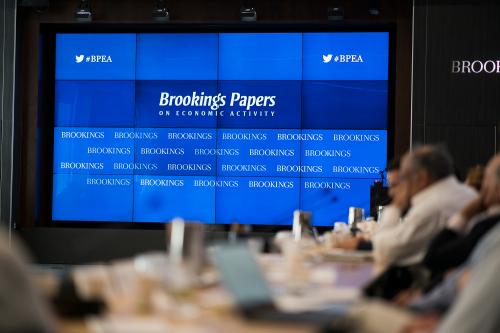The first paper, by Jacob Jensen, Ethan Kaplan, Suresh Naidu, and Laurence
Wilse-Samson, examines an issue that has received considerable
attention for its possible impact on the policy response to the recession
and the slow recovery: political polarization. The paper combines enormous
data sets and recently developed statistical techniques to examine
the dynamics of the polarization of political discourse, both in Congress
and in the broader society, over more than a century. The next three papers
examine various aspects of the labor market. In the second paper of the
volume, Regis Barnichon and Christopher Nekarda make a strong case that
using information on inflows and outflows from employment and unemployment
can lead to substantially better forecasts of the unemployment
rate. The third paper, by Bruce Meyer and James Sullivan, shows that
focusing on consumption rather than income and correcting for biases in
standard price indexes lead to the conclusion that—contrary to the conventional
wisdom—poverty in the United States has fallen sharply over
the past half century. In the fourth paper, Robert Moffitt documents that
the years before the Great Recession saw a downward trend in the fraction
of the U.S. population that was employed, and investigates a range of possible
explanations. The fifth paper, by Karl Case, Robert Shiller, and Anne
Thompson, presents and explores a unique data set on the expectations
and beliefs of U.S. homebuyers during the boom and collapse of the housing
market over the past decade, finding that these expectations display
complicated patterns and are volatile and often highly optimistic. In the
last paper, Michael Klein challenges the recent increase in support among
economists and policymakers for controls on international flows of capital,
and argues that failing to distinguish between controls that are broad and
long-standing and ones that are narrow and temporary can lead to highly
misleading conclusions.
The paper by Barnichon and Nekarda provides the Brookings Papers an
opportunity to do something new for the journal: for the next several years,
monthly updates of the forecasts generated by the paper’s model will be
posted on the journal’s website. These updates will serve two purposes.
First, they will offer policymakers and others a new source of information
about the trajectory of the economy. Second, they will constitute a fully
real-time record of the model’s performance, subjecting the model to a
uniquely demanding test and giving future researchers a powerful way of
evaluating it. In future issues the Brookings Papers will continue to seek
innovative ways to develop and publish useful complements to traditional
research papers.
The Brookings Institution is committed to quality, independence, and impact.
We are supported by a diverse array of funders. In line with our values and policies, each Brookings publication represents the sole views of its author(s).



